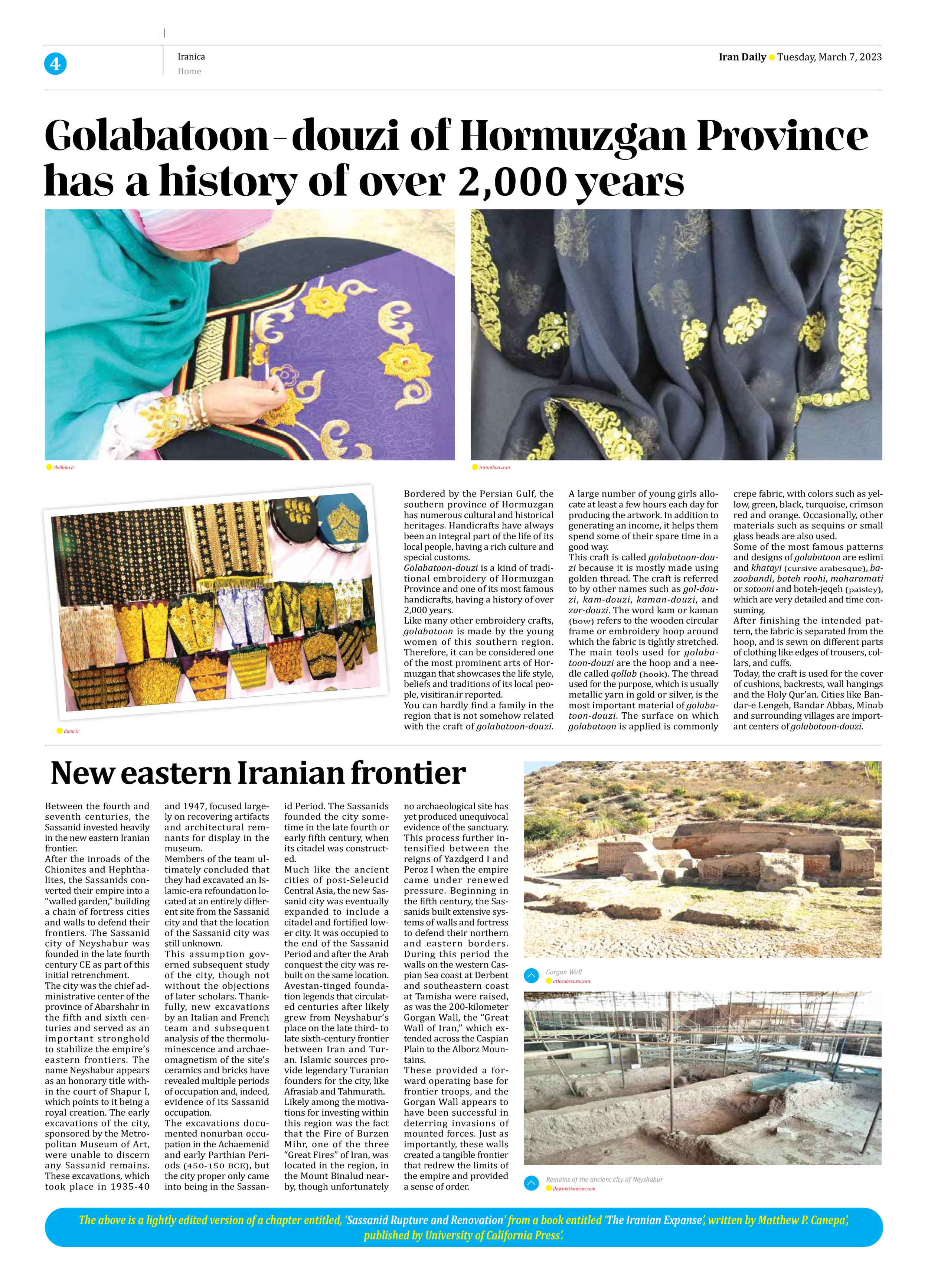
Golabatoon-douzi of Hormuzgan Province has a history of over 2,000 years
Bordered by the Persian Gulf, the southern province of Hormuzgan has numerous cultural and historical heritages. Handicrafts have always been an integral part of the life of its local people, having a rich culture and special customs.
Golabatoon-douzi is a kind of traditional embroidery of Hormuzgan Province and one of its most famous handicrafts, having a history of over 2,000 years.
Like many other embroidery crafts, golabatoon is made by the young women of this southern region. Therefore, it can be considered one of the most prominent arts of Hormuzgan that showcases the life style, beliefs and traditions of its local people, visitiran.ir reported.
You can hardly find a family in the region that is not somehow related with the craft of golabatoon-douzi. A large number of young girls allocate at least a few hours each day for producing the artwork. In addition to generating an income, it helps them spend some of their spare time in a good way.
This craft is called golabatoon-douzi because it is mostly made using golden thread. The craft is referred to by other names such as gol-douzi, kam-douzi, kaman-douzi, and zar-douzi. The word kam or kaman (bow) refers to the wooden circular frame or embroidery hoop around which the fabric is tightly stretched. The main tools used for golabatoon-douzi are the hoop and a needle called qollab (hook). The thread used for the purpose, which is usually metallic yarn in gold or silver, is the most important material of golabatoon-douzi. The surface on which golabatoon is applied is commonly crepe fabric, with colors such as yellow, green, black, turquoise, crimson red and orange. Occasionally, other materials such as sequins or small glass beads are also used.
Some of the most famous patterns and designs of golabatoon are eslimi and khatayi (cursive arabesque), bazoobandi, boteh roohi, moharamati or sotooni and boteh-jeqeh (paisley), which are very detailed and time consuming.
After finishing the intended pattern, the fabric is separated from the hoop, and is sewn on different parts of clothing like edges of trousers, collars, and cuffs.
Today, the craft is used for the cover of cushions, backrests, wall hangings and the Holy Qur’an. Cities like Bandar-e Lengeh, Bandar Abbas, Minab and surrounding villages are important centers of golabatoon-douzi.







